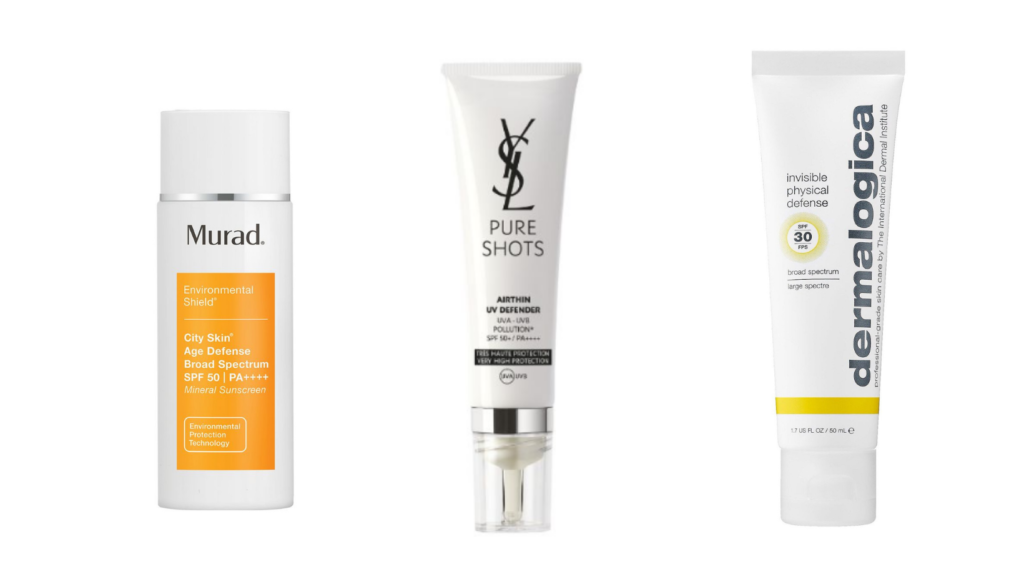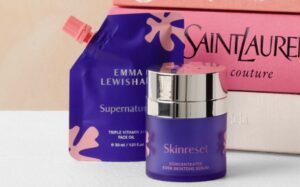There is no more important step in your skincare routine than SPF, yet it’s the stage that many people don’t really understand. With a certain Hollywood celebrity recently giving very dangerous advice on the subject, it’s more important than ever that we all understand why we must always wear a broad-spectrum SPF – no matter what the season or what the weather is like.
I sat down with skincare formulation chemist Pippa Harman of Renude to chat all things SPF. It’s important that we all take this topic very seriously, so we wanted to share this guide to the dos and don’t of wearing sun protection.
What is your skincare background and experience?
I have a BSc in Cosmetic Science and spent the first part of my career working as a skincare formulation chemist. I have led the development of several sunscreen formulations, and have even worked in the laboratory to perform testing on new sunscreen formulations. Now I am the co-founder of Renude, a skincare recommendation service which combines clinical expertise and AI to create personalised skincare routines.
Why is it important that you wear SPF every day, all year-round?
Our skin is exposed to UV radiation from the sun every day, all year round. Even if you don’t step outside, certain wavelengths of UV are able to pass through windows and therefore come into contact with the skin. UV radiation can cause damage to the skin, which in the worst case can lead to skin cancer, and in all cases will lead to premature ageing. Wearing sunscreen daily provides our skin with protection against UV damage, and therefore against skin cancer and premature ageing from sun exposure.
What is the difference between physical and mineral SPFs? What are the benefits and disadvantages of each for different skins?
The difference between physical/mineral and chemical/synthetic sunscreens are the type of UV filters used. Physical sunscreens use mineral powers (titanium dioxide and/or zinc oxide) to form a physical shield on the skin. These filters work by reflecting UV light away from the skin so it cannot cause damage. These types of sunscreens can have a whitening effect on the skin, due to the physical powers, so may not be suitable for darker skin tones. They tend to be a better option for sensitive skin types.
Chemical sunscreens use a blend of synthetic UV filters to block out different wavelengths of the UV spectrum. They work by absorbing into the skin, and converting UV energy into heat energy within the skin, so that the UV cannot cause damage to the skin. Chemical formulations are usually non-whitening so can suit all skin tones (although there are some powder chemical filters which can still cause a whitening of the skin). It is also easier to achieve more invisible, lightweight textures with chemical formulations.
What is broad spectrum SPF and why is it important?
The SPF number equates to the number of times longer you can remain in the sun before your skin starts to burn. So if it would usually be 5 minutes, then an SPF15 would make this time 15 x 5 minutes = 75 minutes. SPF specifically relates to the level of UVB exposure, which is the wavelength range which can result in sunburn.
Broad-spectrum refers to the level of UVA protection in relation to the UVB (SPF) protection of the product. In Europe, the law requires that the level of UVA protection is at least 1/3 that of the UVB. The star rating (developed by Boots) is a useful guide for showing the level of UVA protection, although this is not universally used. A 5* rating provides the highest level of UVA in comparison to UVB protection. Both UVA and UVB wavelengths can cause skin damage including skin cancer so it is vital that you protect yourself against both.
What is the correct amount of SPF to apply to the face?
Current guidance from the British Association of Dermatology is 1/2 teaspoons worth for your face and neck.
Can people rely on the SPF in their makeup for protection?
I always advise applying sunscreen as a separate product as the last step in your skincare routine, before any make-up. This is because typically you might not use enough with makeup, or evenly cover the entire face and neck (and ears!), so it is best to apply this in addition to any makeup.
SPF 30 or SPF 50?
SPF30 is the recommended minimum protection by the British Association of Dermatology for year-round protection. If your skin is fair, or sensitive to the sun, an SPF50 could be a better option, although either is better than none!
How often should you reapply SPF?
Current guidelines are to reapply sunscreen every 2 hours, or after sweating or swimming. This is in addition to following safe sun practises: covering up with a hat and sunglasses and keeping to the shade between 11am-3pm on sunny days.
Thanks Pippa. Finding SPFs that work for you if definitely a process of trial and error. Some will make your skin feel greasy or irritate your eyes, so you’ll likely try quite a few before you find your holy grail. To help speed that process up, these are some incredible SPFs that i’ve personally tested and loved.
Murad City Skin Age Defense Broad Spectrum SPF 50 – £60 from Murad
Yves Saint Laurent Pure Shots Airthin UV Defender SPF 50 – £38 from Harvey Nichols
Dermalogica Invisible Physical Defense SPF 30 – £49 from Harvey Nichols
Written by Laura Pearson-Smith
You can see more of what i’m loving over on my Instagram.
Sky image – Hongmyeon via Pixabay





